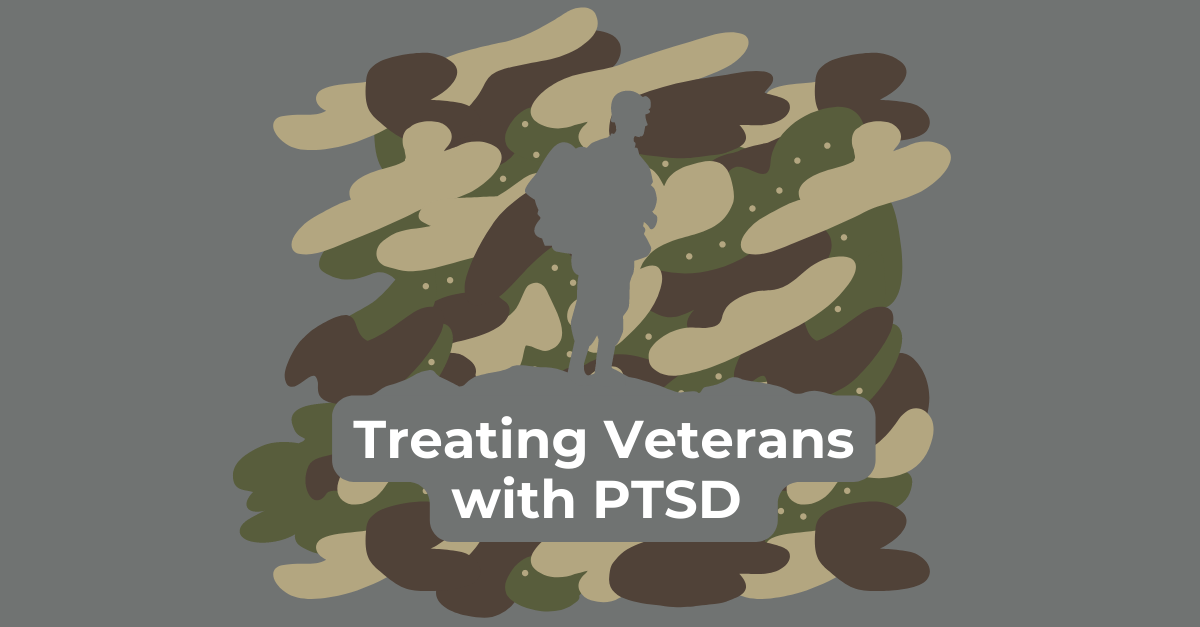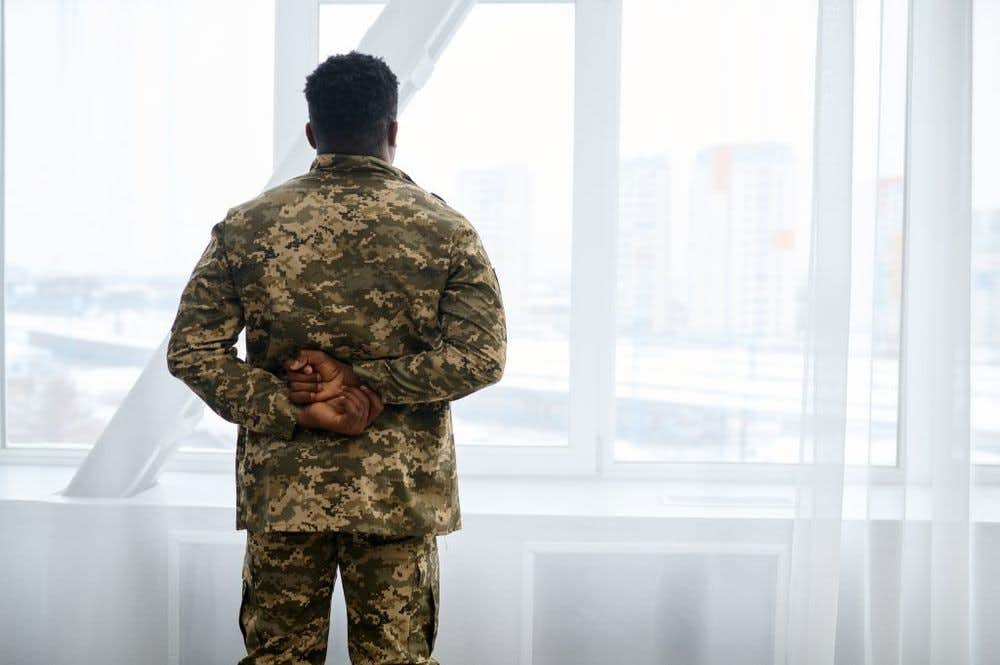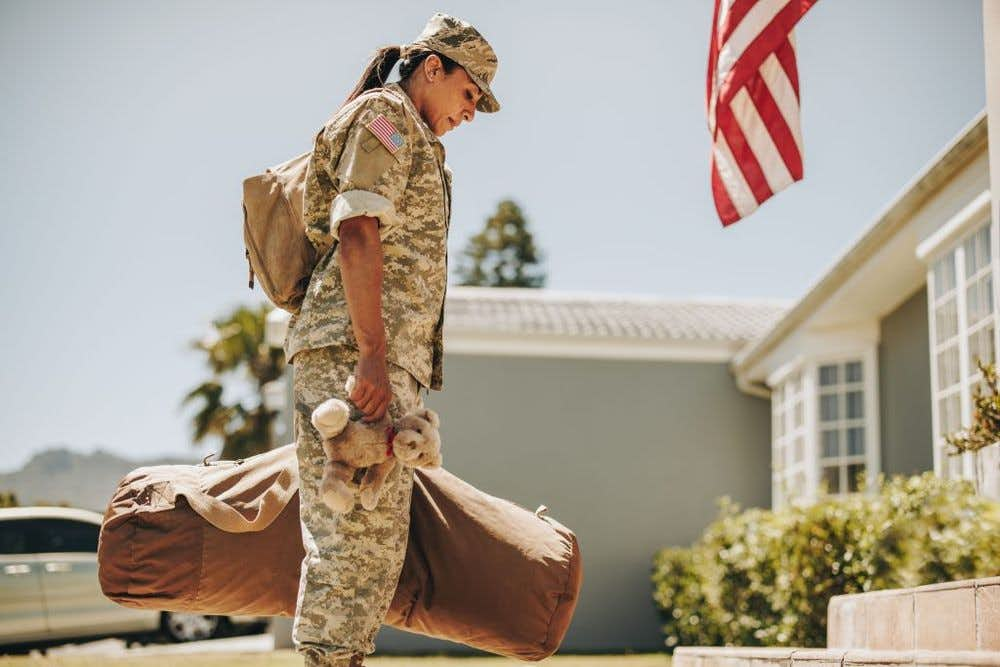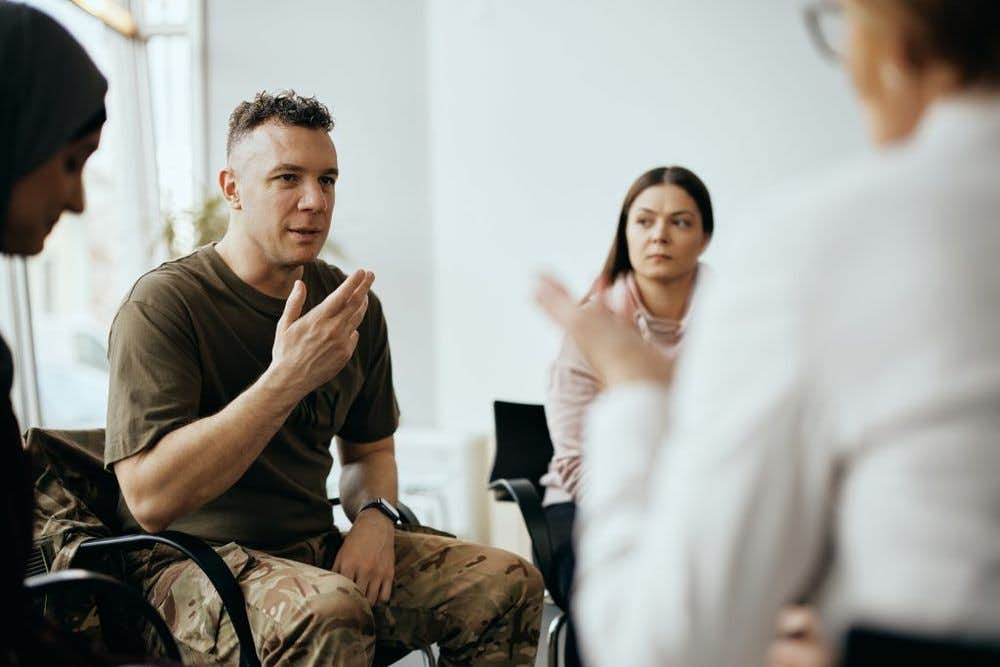November 11th, 2022

In observance of Veterans Day, November 11th, it is important to acknowledge and honor the sacrifices our veterans have made for their country.
On veterans day, it is common for civilians to say, “happy veterans day” or “thank you.” However, 50% of veterans feel uncomfortable with these phrases, as they might not know how to respond or do not view their military service in a positive light. My clinical experience working with the veteran population includes serving those diagnosed with PTSD.
However, many mental health providers may not have experience working with this specific population. To assist veterans who experience PTSD, it is imperative to be sensitive to the unique ways in which veterans perceive their service, to recognize whether a veteran has PTSD and the associated symptoms, and to learn how to help veterans living with PTSD.

It is not uncommon to think that all veterans experience trauma during their service and consequently return home with a diagnosis of PTSD. Although 87% of veterans are exposed to potentially traumatic events, not all veterans go on to develop PTSD.
The overall prevalence of PTSD among the military population ranges from 5% - 15%, with variations as high as 50% depending on the specific conflict endured (i.e. Vietnam War, Gulf War, OEF/OIF) and type of trauma experienced.
There are several factors that contribute to whether trauma will lead to a diagnosis of PTSD. Although veterans may experience intrusive memories, natural emotions, and physiological arousal following a traumatic event, those that take an “active approach” to processing and “dealing with” the event are less likely to develop PTSD.
Thus strongest resilience factor against PTSD involves the extent to which they have access to, seek, and receive support after a potentially traumatic event. Unfortunately, service members may run into challenges in attaining this support, such as a lack of access to resources if in a remote location, in the middle of a mission, or in a combat zone with ongoing threats to their own lives and the lives of others.
Seeking and receiving mental health support may also result in potentially negative consequences. For example, they may be stigmatized as cowardly or viewed by others as unreliable in their ability to perform duties. When seeking professional support, service members only receive brief treatment and, if symptoms do not remit during this time, they may be deemed unfit and face unwarranted discharge.
Other risk factors for veterans include avoidance, which prevents the processing of trauma that is needed for recovery, degree of combat exposure, discharging a weapon during combat, and witnessing life-threatening injuries or death while deployed.

According to the DSM-5-TR, the primary diagnostic requirement for PTSD involves exposure to actual or threatened death, serious injury, or sexual violence, by directly experiencing trauma, witnessing in-person trauma occurring to others, learning about a traumatic event occurring to a close family member or friend, or experiencing repeated or extreme exposure to aversive details of a traumatic event (i.e. combat veterans repeatedly exposed to mortar attacks or viewing/recovering human remains).
Along with exposure to trauma, a diagnosis of PTSD involves the following:
PTSD is highly comorbid with depression, anxiety disorders, substance abuse, and suicidality. PTSD can also strongly impact health, including increased risk of cardiovascular issues, chronic pain, gastrointestinal issues, and obesity, among others.
In addition, the COVID-19 pandemic not only created additional stressors (i.e. fear about getting sick, concerns for loved ones, isolation, and job loss) but also may have exacerbated PTSD symptoms. For example, veterans with PTSD may experience heightened hypervigilance, more trauma triggers, reckless behavior, increased negative alterations in mood and cognition, and enhanced problems with sleep and concentration.

PTSD treatment serves to help veterans learn to feel safer in the world and cope with distress in healthy ways. Research shows that treatment for PTSD involves a combination of both medication and psychotherapy. Medications, such as antidepressants, can serve to reduce specific affective and arousal symptoms impacted by trauma, including irritability, depression, anxiety, and sleep disturbances.
By restoring the balance of naturally occurring neurochemicals, veterans are better able to take more of an “active approach” to engaging in trauma treatment, including processing the trauma and tolerating associated distress. At this time, the gold standard for PTSD psychotherapy treatment includes cognitive processing therapy (CPT), prolonged exposure (PE), and eye movement desensitization and reprocessing (EMDR).
CPT, which is traditionally delivered in weekly 60-minute sessions for approximately 3 months, teaches veterans to take a more balanced approach to the ways they think about the trauma, wherein they recognize and reframe unhelpful negative cognitions to reduce trauma symptoms. CPT has also been found to be effective in telehealth formats in addition to mass formats, such as twice-daily sessions for five days.
PE, which is traditionally delivered in weekly 90-minute sessions for about 2-3 months, involves talking about trauma with the goal of desensitizing veterans to associated arousal, negative changes in cognition, and mood-related, and intrusive symptoms. They also learn to approach situations causing fear rather than allowing avoidance to maintain or worsen trauma symptoms. Research shows that PE is effective no matter whether treatment is delivered in-person in the office, home-based telehealth, or in-person in the home. PE has also been found to be effective in massed formats, such as 10 daily sessions.
EMDR, which is delivered in weekly 60-minute sessions for about three months, involves recalling, integrating, and processing the trauma while focusing on an external motion or sound. The focus on an external motion or sound serves to reduce the distress associated with discussing trauma. Currently, limited research exists regarding the efficacy of delivering EMDR via telehealth. According to the National Center for PTSD, about 53% of veterans who complete CPT, EMDR, or PE no longer meet the diagnostic criteria for PTSD.

Various resources exist that provide assistance to both veterans and their families, ranging from assistance with mental health treatment, housing, jobs, enrollment in benefits, and paying for college, among others.
The single most important resource to provide veterans and their families is the Veterans Crisis Line, also known as the Military Crisis Line. This resource connects veterans and service members to qualified individuals who can assist during immediate crises associated with suicidality. Veterans can call 988, then press 1, to be connected. Additional resources can be accessed through the veteran’s local VA or Vet Center.
Along with that, online resources are available to both veterans and their families. Below are some resources clinicians can provide:
Resources for specific veteran populations and family members:
Provider resources:
Certifications – resources for advanced certifications in trauma treatment:
Written by: Dr. Jocelyn Kressler, PsyD.
At Clarity Clinic, we have highly trained staff who specialize in therapy and psychiatry services. To learn more about how we can support your mental health, call Clarity Clinic at (312) 815-9660 or schedule an appointment today.
Our Services
Adult PsychiatryChild & Adolescent PsychiatryAdult TherapyChild & Adolescent TherapyCouples CounselingFamily TherapyGroup TherapyPsychological TestingTranscranial Magnetic StimulationPHP / IOP